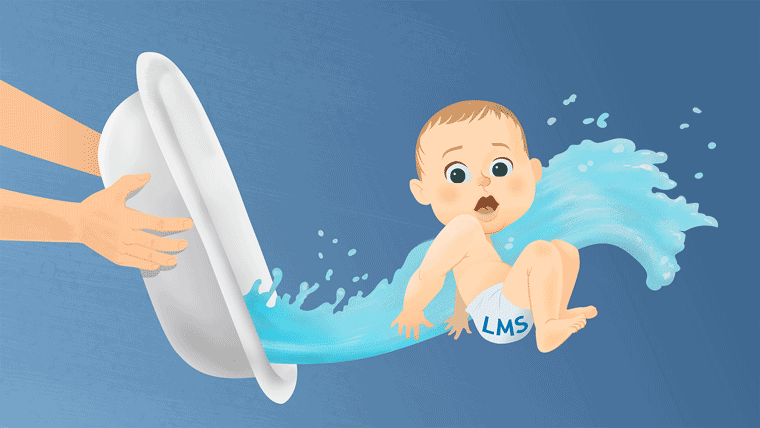
Time To Toss The Learning Management System (LMS)?
There has been a lot of talk about the end of the Learning Management System (LMS). Of course, it shouldn’t be a surprise that newer technology vendors — who want to grab a share of this market (i.e LMS Plus!) — are writing obituaries for the LMS. But what does it mean when we’re hearing it from actual organizations that are paying for these systems year over year?
Have we reached a point where the LMS is antiquated… irrelevant… unnecessary… unbearable… unable to deliver significant ROI? Is it really time to put it to rest and move on?
The LMS was initially created for educational institutions to address distance learning. The value was its ability to deliver and manage instructional content, student registration, and reporting of student work in an automated way. The LMS was a breakthrough technology — a godsend — that sped up these processes, removed geographic limitations, and lowered costs.
The success of the LMS in education began to draw in Enterprise users in the early 2000s. Corporate Learning and Development (L&D) departments and staffing agencies successfully leveraged these learning management systems to address their own needs.
Fast forward to 2017. Corporate training needs have clearly surpassed the LMS’ capabilities. “We have come from a world of CD ROMs to online courseware to an explosion of video and instructional content, to a new world of always-on, machine-curated content,” noted Josh Bersin of Bersin by Deloitte. “The LMS, which was largely architected in the early 2000s, simply has not kept up effectively.”
To keep up with the demands and innovations in employee performance, onboarding, culture alignment or machine driven learning, organizations are trying to stretch the LMS with little success. People are frustrated. People are disillusioned. People are looking for new solutions.
This leads us back to my original question: Is it time to bury the LMS once and for all or is it possible that it’s being overextended in ways it was never intended?
My wager is on the latter.
So much so that I’ll make the following recommendation to anyone responsible for L&D success in their organization: do not throw away your LMS. That’s a major and costly decision with a large set of unintended consequences. Without the deep pockets of an IBM or VISA to experiment, it could be very problematic.
Instead, leverage your LMS for its strengths and original intention: a system of record. After all, the operative word in LMS is “Manage,” which is entirely different than “Execute.”
LMS’ are still an effective tool for record keeping with items such as compliance tracking, certification paths and other business rules that are critical to an organization. They can also be used for simplistic, low-level learning events.
For all your other needs, take advantage of the new breed of niche L&D technology providers. There are so many tools designed to address very specific strategic L&D objectives within an organization. I’m talking about tasks an LMS could never dream of executing (yet, many are trying to force it to do so).
These specialized platforms range from Personalized, Adaptive Machine Driven Learning (eg. Fulcrum Labs), Performance Management (eg. BetterWorks), Engagement & Culture Management (15Five), Onboarding Optimization (eg. Commercial Tribe) and/or Learning Experience (eg. Degreed)… to name just a few. And, most play very nice with your LMS through common API standards such as LTI or SAML (If they don’t then don’t bother. It’s a warning sign in and of itself.)
I wholeheartedly agree with Bersin’s conclusion that “One of the keys to digital learning is building a new learning architecture. This means using the LMS as a ‘player’ but not the ‘center,’ and looking at a range of new tools and systems to bring content together.”
In other words, change your expectations, and keep your LMS. Pair it with 2017’s best L&D technologies. That will be the best tactic to achieve your organization’s specific L&D strategies.
